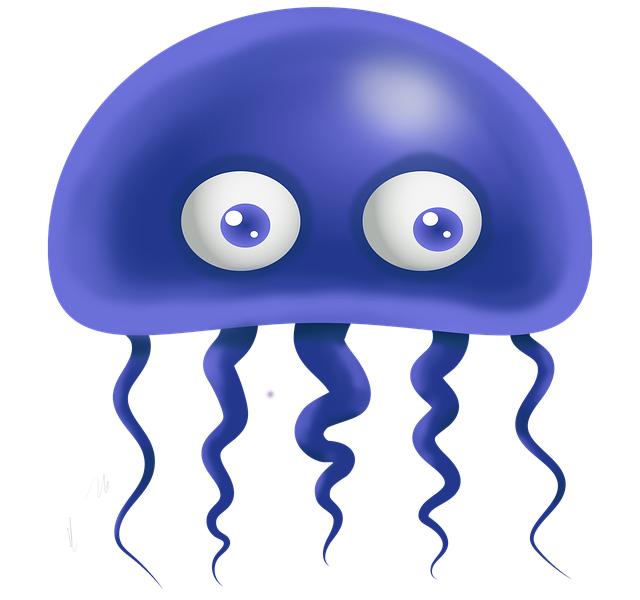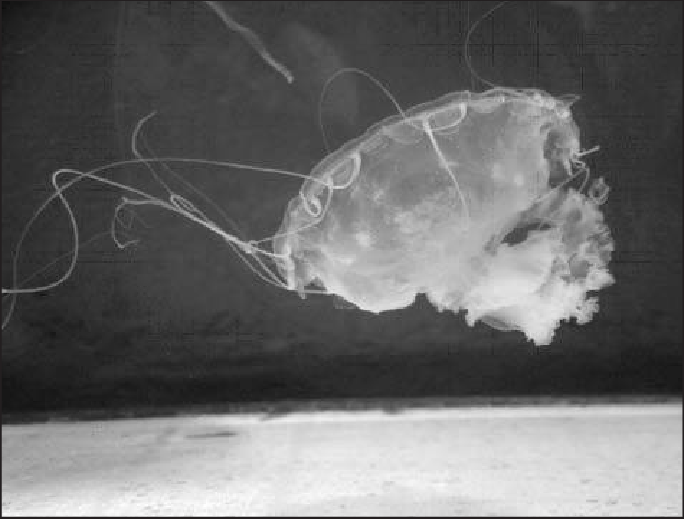Introduction to Inside-Out Jellyfish
Inside-out jellyfish, also known as inverted jellies, present a unique and concerning phenomenon within marine aquariums. In this state, a jellyfish appears to have turned itself inside-out, often displaying its gastrovascular cavity outwardly. This unusual condition is characterized by the jelly’s bell being inverted, which can significantly hinder its ability to swim and feed effectively.
Visual indicators of an inside-out jellyfish include the unmistakable protrusion of internal organs and a noticeable change in the jellyfish’s typical floating or pulsating behavior. These signals should warrant immediate attention, as they typically indicate underlying stress, improper aquarium conditions, or other health issues affecting the jellyfish. In essence, the phenomenon is not merely an aesthetic issue but a critical sign of a jellyfish’s compromised well-being.
Understanding the root causes of a jellyfish exhibiting inside-out features is essential for aquarium caretakers. Stress factors, ranging from imbalanced water parameters to improper handling techniques, can all contribute to this distressing state. As we explore the causes and solutions in the following sections, it’s crucial to approach jellyfish care with a mindset of diligence and detail. A proactive strategy in maintaining optimal conditions can greatly reduce the likelihood of such occurrences.
Jellyfish are delicate creatures, and their health can be easily influenced by their environment. Recognizing the signs of discomfort and promptly addressing the contributing factors can prevent long-term damage or mortality. By gaining insight into these issues, aquarium enthusiasts can cultivate a more conducive habitat that promotes the health and longevity of their jellyfish.
Causes of Inside-Out Jellyfish
Inside-out jellyfish, a condition where the jellyfish’s internal structures become externally visible, is a phenomenon primarily caused by suboptimal aquarium conditions and poor handling practices. This section delves into these contributory factors in detail, elucidating their impact on the delicate physiology of jellyfish.
Improper water conditions are a principal cause of inside-out jellyfish. Jellyfish are highly sensitive to changes in their aquatic environment. An incorrect saline concentration can impair their ability to regulate their internal structure, leading to the inside-out condition. Scientific studies have shown that maintaining a stable salinity level between 32-35 parts per thousand (ppt) is critical for the health of these organisms. Deviations from this range can induce significant stress, causing the jellyfish to invert as a result of osmoregulatory failure.
Temperature is another crucial factor. Jellyfish thrive within a specific temperature range, typically between 22°C and 25°C. Temperatures outside this spectrum can disrupt their cellular function, contributing to inside-out manifestations. For instance, a sudden drop in temperature can slow metabolic processes, leading to a lack of energy required to maintain normal anatomical positions.
Additionally, pH levels that vary significantly from the neutral range (7.8-8.4) can negatively impact jellyfish bioelectrical functioning, exacerbating the risk of inversion. Studies suggest that prolonged exposure to inappropriate pH levels can lead to chronic stress and structural destabilization in jellyfish.
Handling practices during feeding or tank maintenance are equally critical. Rough or improper handling can cause physical stress to the jellyfish, which is delicate and easily damaged. For example, using inappropriate tools or exerting excessive force can injure their soft tissues, making them susceptible to the inside-out condition. Experts recommend using gentle, jellyfish-specific handling tools and minimizing direct contact to mitigate stress.
In summary, maintaining optimal aquarium conditions and employing careful handling practices are paramount in preventing inside-out jellyfish. By understanding these causes, aquarium enthusiasts can take proactive steps to ensure the well-being of their jellyfish, thereby avoiding this distressing phenomenon.
Assessing Your Jellyfish’s Environment
When accommodating jellyfish in your aquarium, maintaining optimal water conditions is paramount. Water quality parameters such as salinity, temperature, pH, ammonia, nitrites, and nitrates play significant roles in ensuring the well-being of your jellyfish and preventing issues such as inside-out jellyfish phenomena. To begin, it is essential to regularly test water quality using reliable kits to monitor these parameters.
Salinity should be closely regulated, generally kept between 30-35 parts per thousand (ppt). Use a precision hydrometer or refractometer for accurate measurements. Temperature is another crucial element; jellyfish thrive in a stable range of 23-25 degrees Celsius (73-77 degrees Fahrenheit). Implementing a high-quality aquarium heater and thermometer can ensure these parameters remain steady.
The pH level needs to be consistently balanced, typically between 8.0 and 8.4. Anomalies in pH can signal potential issues that may stress the jellyfish. Likewise, ammonia, nitrites, and nitrates must be tightly controlled. Ammonia and nitrites should always read zero, while nitrates should remain below 10 ppm. Elevated levels of these compounds can indicate poor water quality, posing significant risks to jellyfish health.
An essential aspect of managing aquarium conditions is stability. Sudden changes in water parameters can significantly stress the jellyfish, leading to various health problems. To avoid this, make gradual adjustments and monitor the water closely after any changes. Employing specific filtration systems designed for jellyfish tanks can aid in maintaining pristine water quality. For instance, a protein skimmer can help remove organic waste before it decomposes into harmful substances.
A consistent cleaning schedule is crucial. Regularly siphoning debris from the substrate and performing water changes of about 20% every two weeks can prevent the buildup of harmful compounds. Stability and cleanliness form the cornerstone of a healthy jellyfish habitat, effectively mitigating the risks associated with inside-out jellyfish issues and ensuring your jellyfish continue to thrive.
Methods to Help Your Jellyfish Recover
If your jellyfish has exhibited inside-out behavior, there are several actionable steps you can take to help it return to its normal state. The first step involves carefully correcting the aquarium conditions. Ensuring that your tank maintains the correct water parameters is vital. Gradual acclimatization can be effective; begin by checking and adjusting the aquarium’s salinity, temperature, and pH levels. It’s important to do this slowly to avoid further stressing the jellyfish. Consistency in maintaining optimal water quality will contribute significantly to the jellyfish’s recovery.
In addition to monitoring water conditions, attentive and gentle handling is crucial in aiding a jellyfish’s recovery. Use soft nets and avoid direct contact with the jellyfish as much as possible. When necessary, transport the jellyfish in water-filled containers to minimize stress and injury. Such gentle handling techniques ensure that the jellyfish remains as undisturbed as possible throughout the recovery process.
Consulting with a marine biologist or veterinarian who specializes in aquatic life can also provide valuable guidance. These experts can offer tailored advice and possibly identify underlying issues that may not be immediately apparent. They can provide recommendations on specific treatments that might not be commonly known, which could be pivotal for your jellyfish’s health.
Success stories from other aquarists can be invaluable sources of support. Many have faced similar challenges with their jellyfish and successfully resolved them by adjusting aquarium conditions, employing careful handling, and seeking expert advice. Engaging with online forums, aquarium clubs, or dedicated social media groups can provide community support and additional tips for managing and preventing inside-out jellyfish.
By remaining diligent and attentive, you can create a stable and conducive environment for your jellyfish to recover. Armed with expert advice, a community of support, and the right techniques, you can confidently address and mitigate inside-out behavior, fostering a healthier life for your delicate marine inhabitant.

